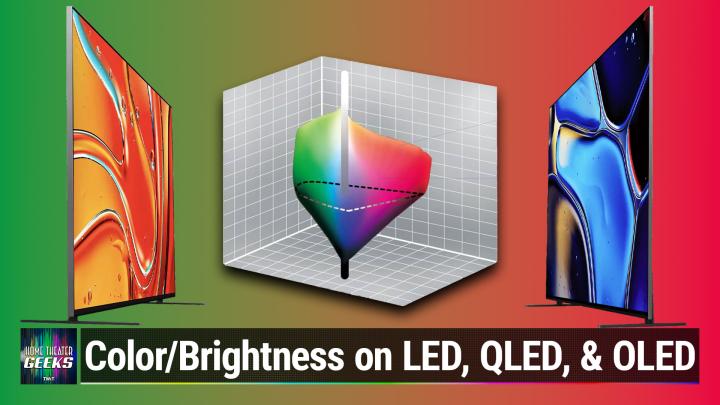Configuring Brightness & Color in Modern TV Displays
Created by AI, edited by humans.
In the ever-evolving world of television technology, understanding the nuances between different display types can be crucial when purchasing. In a recent episode of Home Theater Geeks, host Scott Wilkinson delved deep into the fascinating realm of TV brightness and color quality, comparing LED, QLED, and OLED technologies. Let's break down the key points to help you navigate this colorful landscape.
The Basics: LED vs OLED
At the core of the discussion lies the fundamental difference between LED (which are actually LCD TVs with LED backlights) and OLED displays. While LED TVs use a backlight to illuminate pixels, OLED TVs employ organic materials that emit light directly. This distinction is crucial in how each technology handles color and brightness.
Color Depth and Richness
One of the standout advantages of OLED technology is its ability to produce deeper blacks and richer colors. Because each pixel in an OLED display can be turned off completely, it achieves true black levels that LED TVs struggle to match. This capability contributes significantly to the overall perceived color quality and depth.
Quantum Dots: Boosting LED Performance
Many LED TVs now incorporate quantum dot technology to bridge the gap with OLED, creating what we know as QLED displays. Quantum dot enhancement films help improve color accuracy and expand the color gamut of LED TVs. This innovation has allowed LED technology to remain competitive in terms of color performance.
Understanding Color Gamut and Volume
Two essential concepts in assessing TV color performance are color gamut and color volume. Color gamut refers to the range of colors a display can produce, while color volume considers how well those colors are maintained at different brightness levels.
Interestingly, while OLED TVs often excel in color richness at lower brightness levels, QLED TVs can have an advantage in color volume. This means QLEDs might be able to maintain vibrant colors even at higher brightness levels, where some OLED displays might struggle.
Brightness: More Isn't Always Better
It's a common misconception that simply increasing a TV's brightness will result in better color performance. However, the relationship between brightness and color quality is more complex. Pushing an LED TV to its maximum brightness can sometimes lead to washed-out colors and reduced overall picture quality.
Real-World Implications: Movie Mastering
The importance of these technical aspects becomes clear when we consider how movies are mastered for different TV capabilities. Scott uses "The Meg" as an example, mastered for a peak brightness of 4,000 nits. Most TVs can't reach this level of luminance, requiring a process called tone mapping to adjust the brightness while preserving detail and color accuracy. High-end models like Sony's Bravia 9 can handle these intense brightness levels without adjustment.
Consumer Takeaway
The world of TV display technology is rich with complexity in today’s landscape. While OLED technology often receives praise for its color depth and black levels, advancements in QLED technology are narrowing the gap. Understanding concepts like color gamut, color volume, and tone mapping can help customers make a more informed decision when choosing the next TV.
Want to dive even deeper into the world of TV technology? Become a Club TWiT member and watch the full episode of Home Theater Geeks episode 439 for more insights, including Scott's surprising personal connection to "The Meg" soundtrack! Join Club TWiT and head to twit.tv/htg for more television topics!
